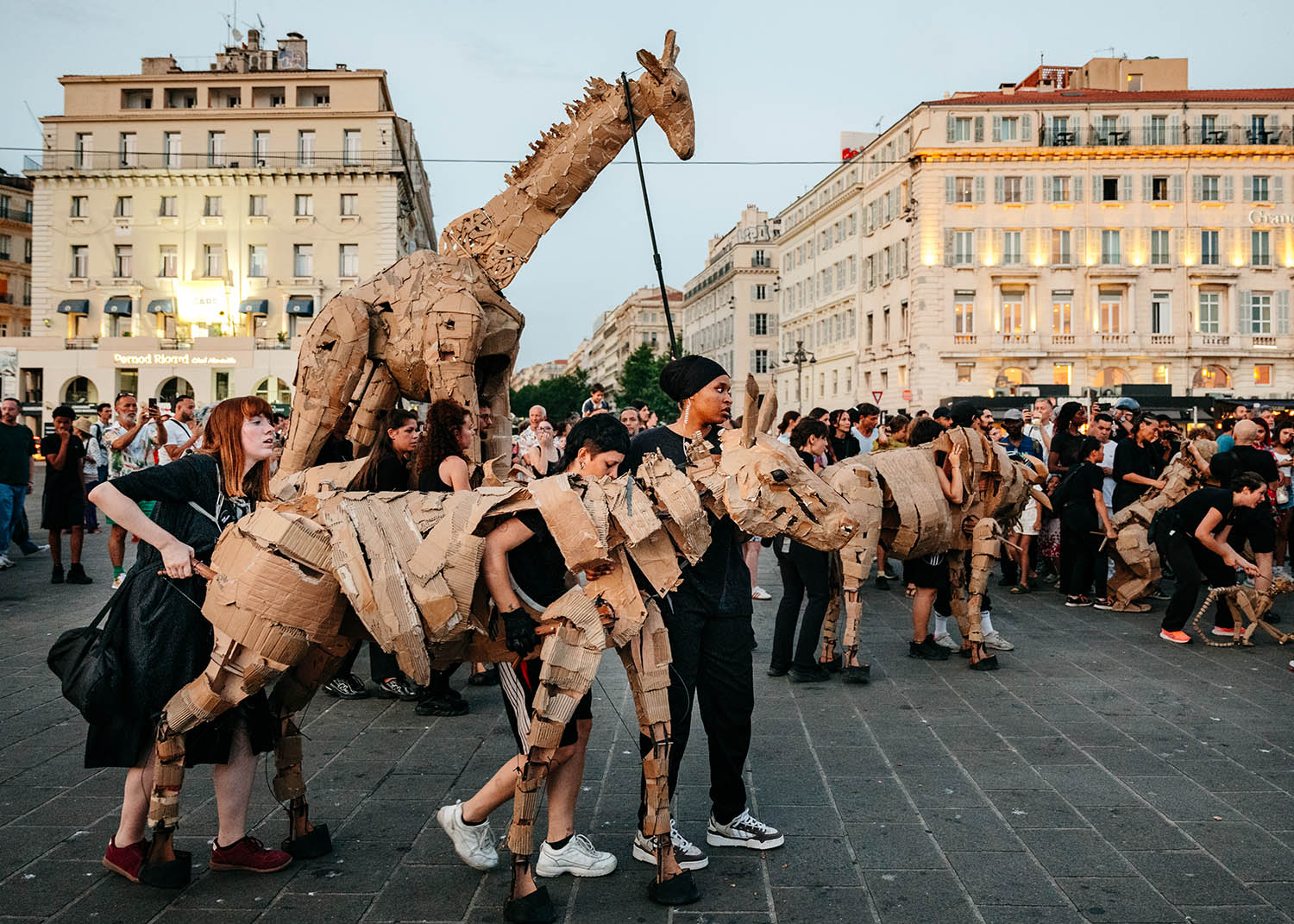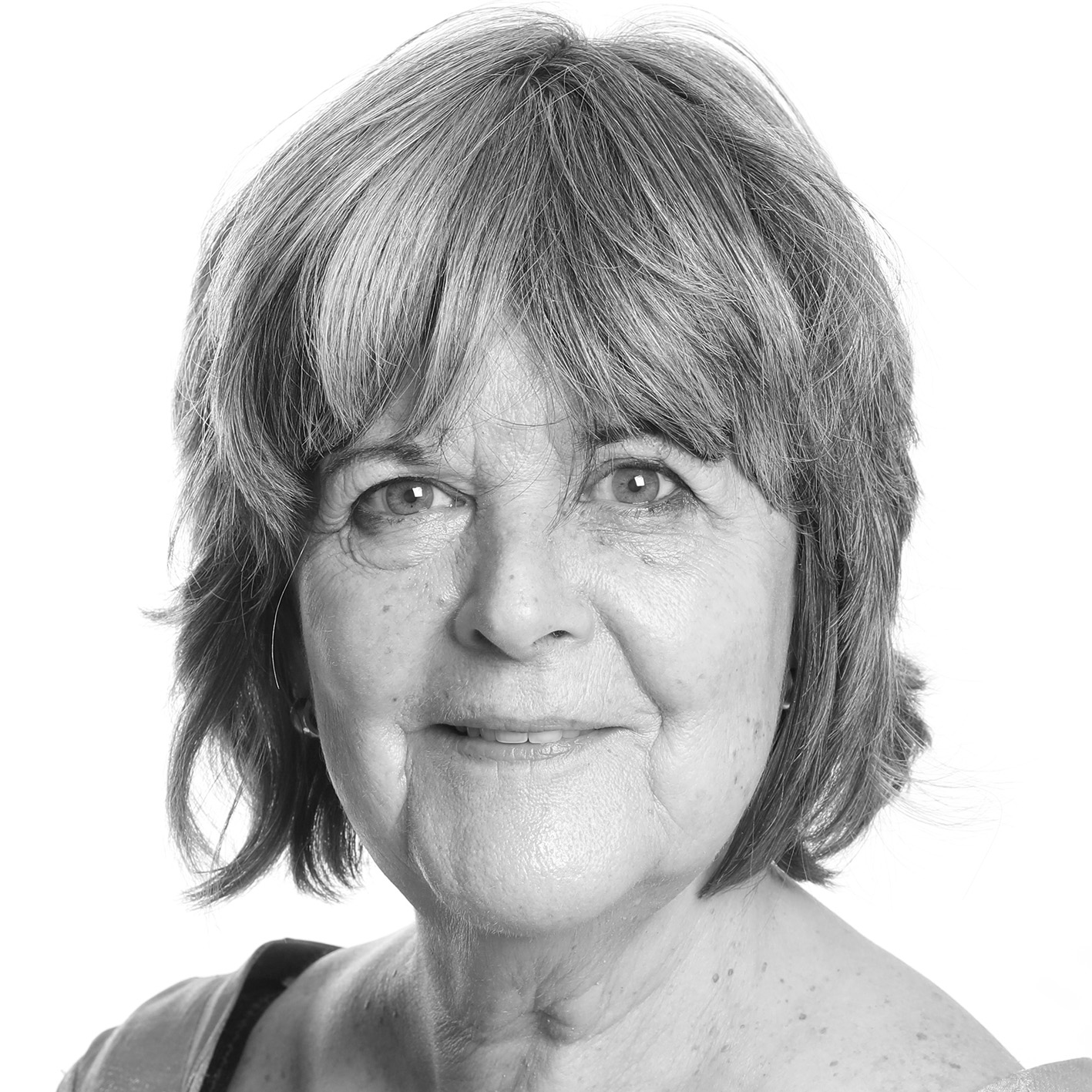It is time to change the queasy British attitude to public art. If we took it more seriously, we would not have such rotten statues, and would put up with fewer hideous pieces of “street furniture” (such as those military municipal waste bins). If we stopped thinking that the higher the price, the more elevating the experience, we might have more eruptions like The Herds. I watched these marvellous puppet creatures last week, sashaying, gambolling, charging through streets in southern France. Propelled by environmental purpose, lit up by delight, alarmed but determined, fashioned ingeniously, they illuminate the cityscapes around them: they are shots to the heart.
Four years ago, a 12ft-high girl puppet (with red boots and a bemused smile), walked from Turkey to the UK: a Syrian refugee in search of her mother. Pelted by stones in Greece, taught to make pasta in Italy, Little Amal was the creation of The Walk Productions, founded by David Lan (formerly of the Young Vic) and Tracey Seaward, to make large-scale public works of art; the artistic director is Amir Nizar Zuabi. Now, as a response to the climate crisis, The Walk has made a troupe of lifesize puppet animals, who are travelling almost 12,500 miles from the Congo basin to the Arctic Circle, in flight from catastrophe.
Here are ambassadors for the imagination: stately kudu with candelabra antlers, a lion with a face as sculpted as Greta Garbo, zebra, baboon, wildebeest, a gorilla, a three-metre-high elephant, giraffe, vervet monkeys. The animals – designed in Cape Town by Ukwanda Puppets and Designs Art Collective, and replicated by partners along the route – reflect the 10 countries through which they pass. In Marseille, a red deer was being prepared; in Norway, there will be wolves. Powerful but not solid, made of cane and cardboard and plywood, their frames are partly seen through the patches of corrugated cardboard that make up their hides: Ukwanda’s Siphokazi Mpofu explains that each patch is torn by hand, so that no shape is the same; the corrugations ruffle the surface, like tufts of fur. Their bead eyes are like coal.
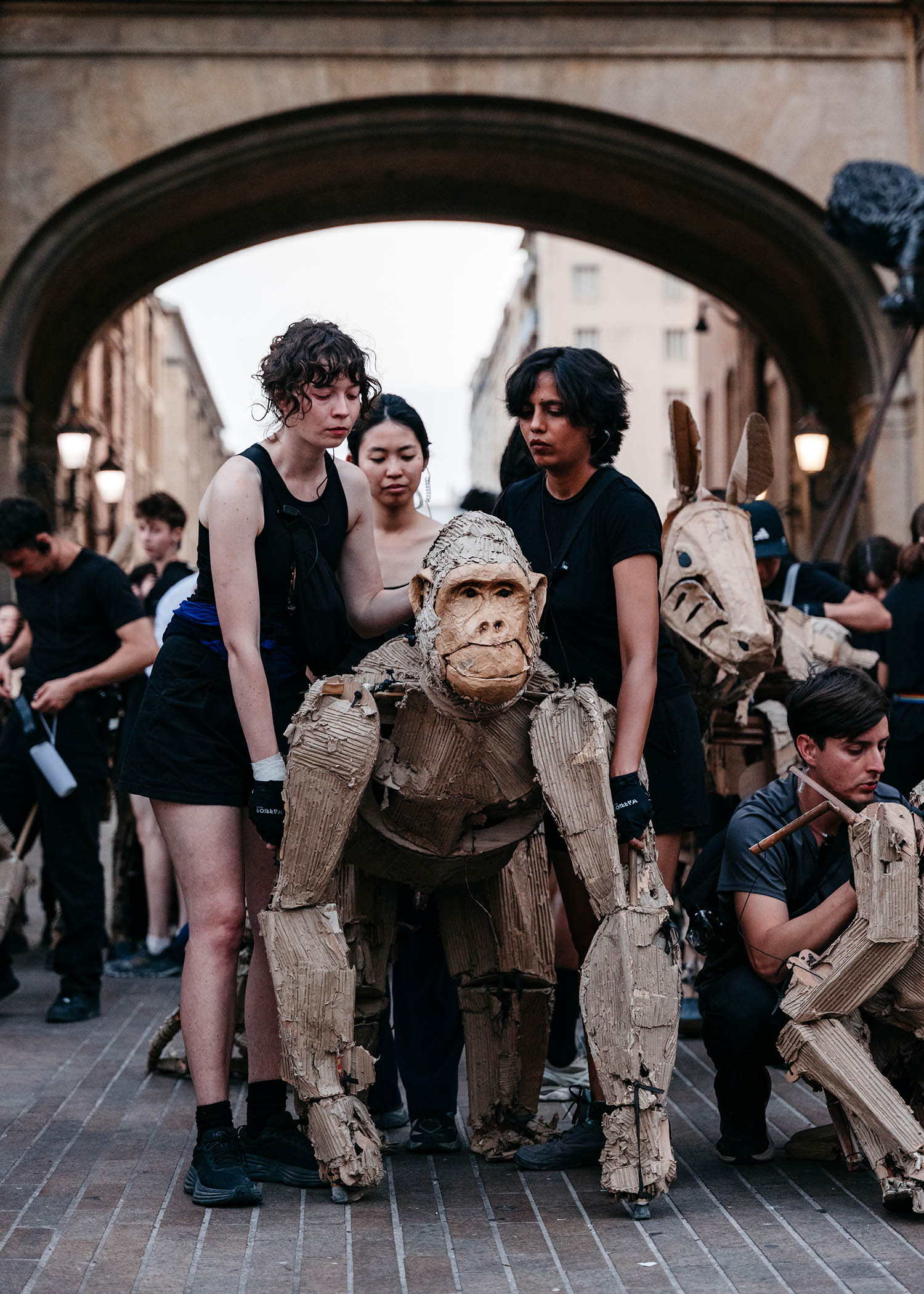
‘Calm and collaborative’: puppeteers operate The Herds’ gorilla
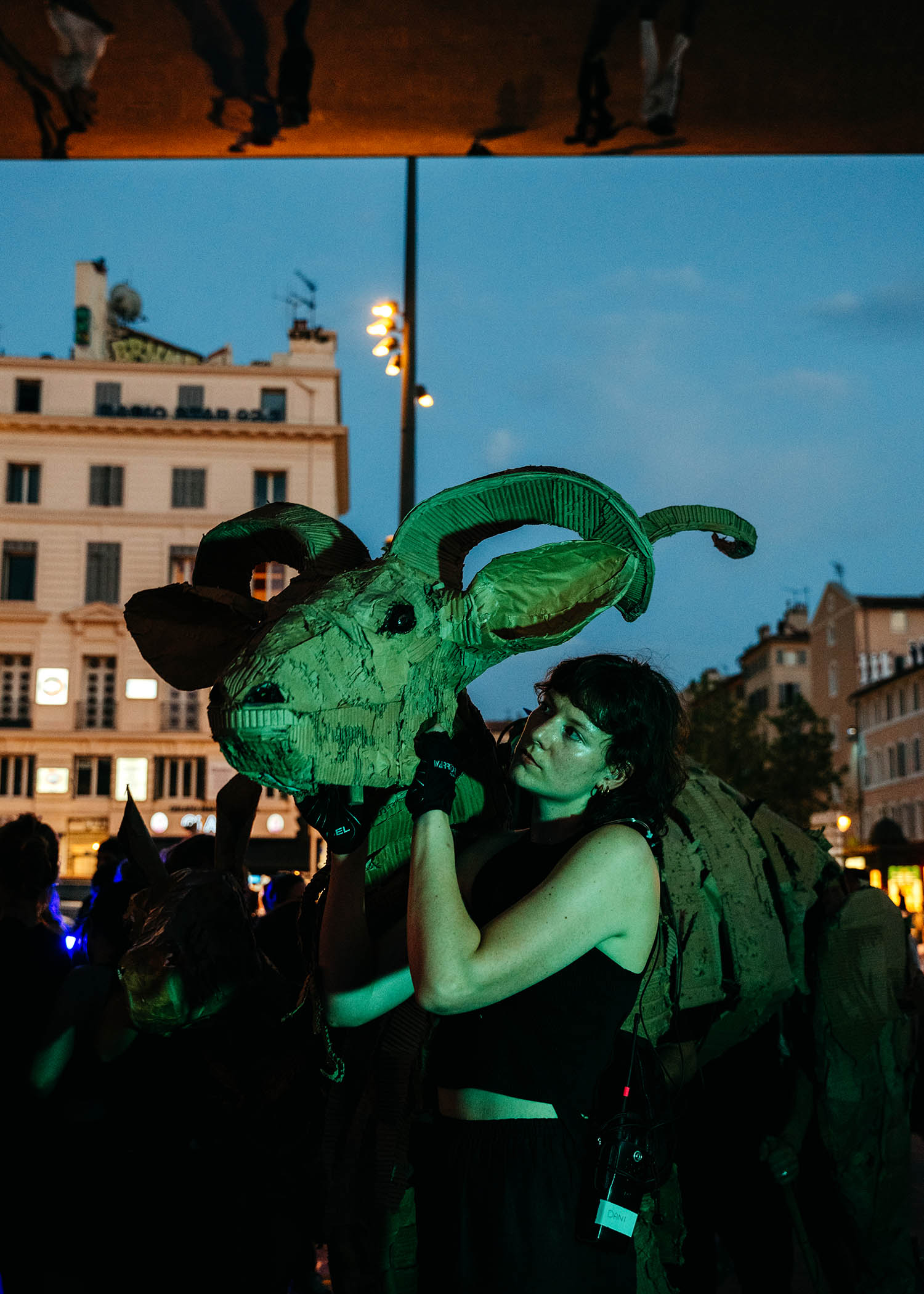
‘Night-time safari: ‘Entirely new attitudes spring into life’ with a tilt of the head
These feats of engineering are given life through movement. Without the puppeteers, the rehearsal space on the outskirts of Marseille – cavernous and clanging – could be the scene of a failed Ikea experiment. Against the walls are cardboard carcasses. A giraffe’s neck is propped in a box of tissue paper as if it were grazing on the contents. A wildebeest lies on its side, its rib cage gaping. A skinny vervet monkey – with a fringe of wood-shavings and legs segmented like decorative hose – is inert as a piece of abandoned string.
Animating the creatures is a triumph of trust, collaboration and endurance. The little vervet can be frisked along by one person and a chimpanzee manoeuvred by two, but the wildebeest, kudu and gorilla need three puppeteers, and it takes five to manage the elephant, which weighs 23st. Puppeteers come away from an event with stiff limbs, dripping in sweat and exhilaration; on each outing, one puppet is likely to lose a limb. Zuabi warns his troupe at the beginning that no one should think of this as simply a road trip: “It’s not going to be fun.”
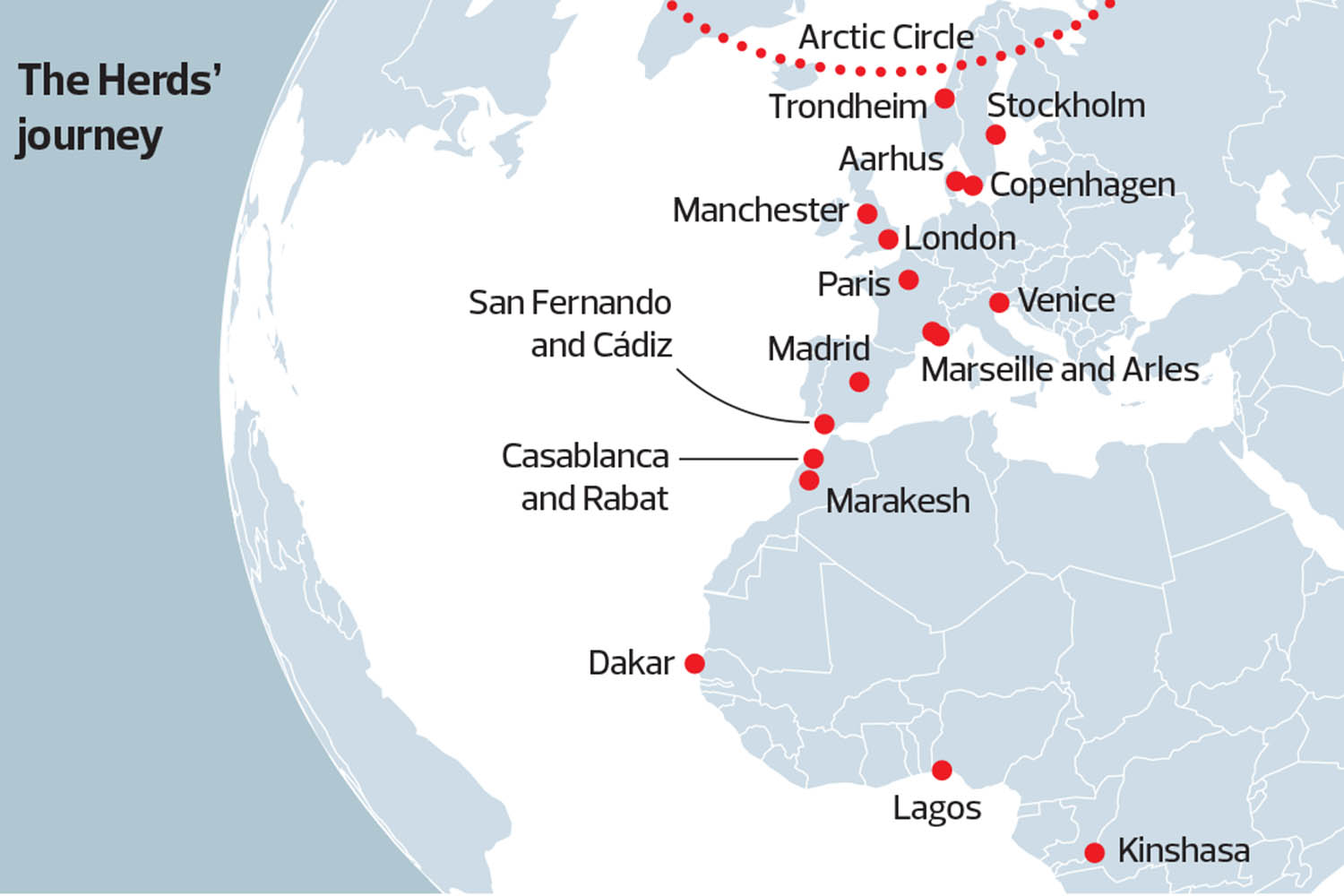
The Herds’ route from Africa to the Arctic
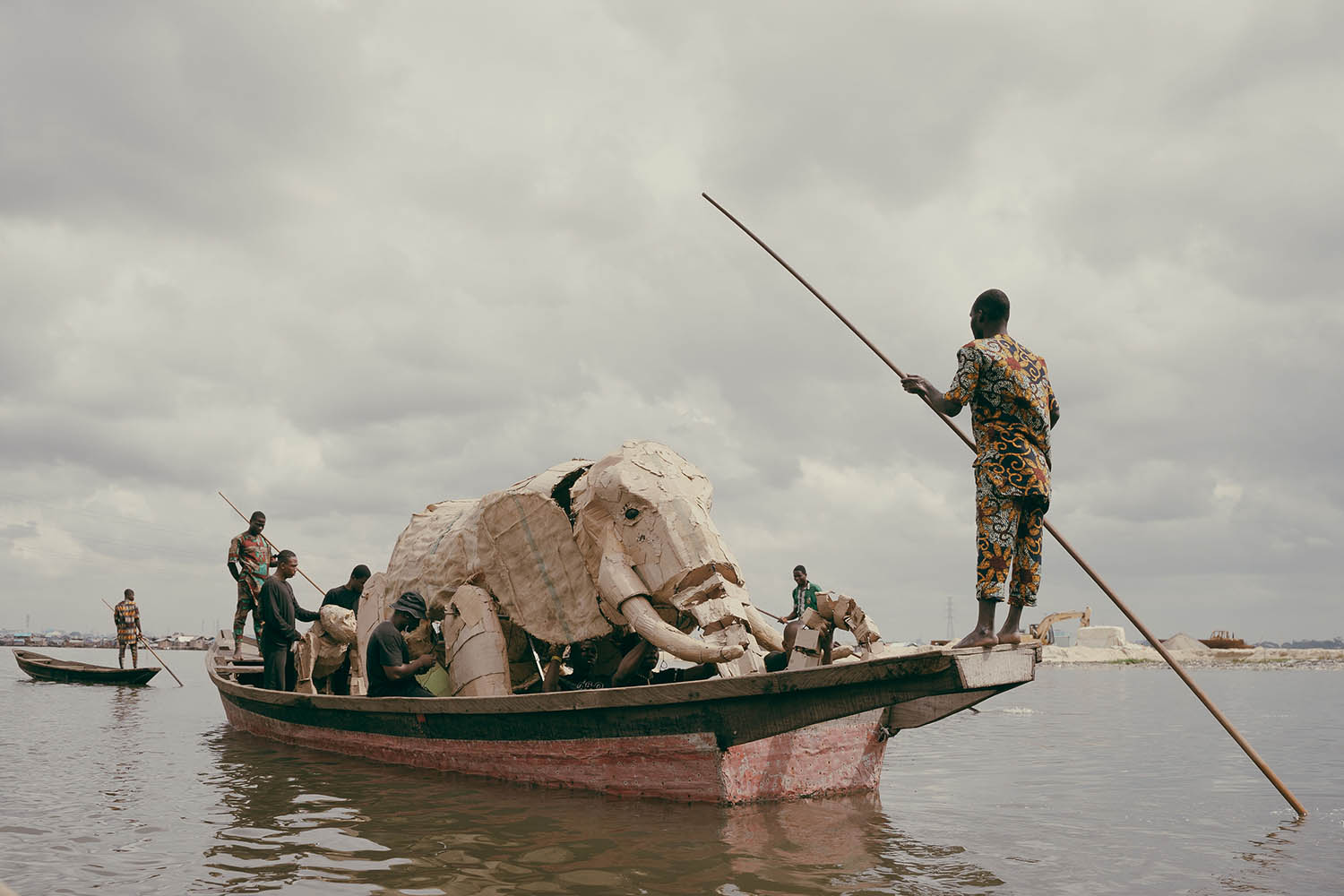
The Herds on the Makoko River, Lagos
To work in concert, puppeteers synchronise their breath – not easy in a kudu where the person manipulating the head and gaze is a long body away from the back legs. They learn to follow, sometimes blindly, the instructions given to them in earpieces by Zuabi. They will have walked the route earlier, but won’t remember every turn in an unknown city – no one stuck in the back of a zebra can see the road ahead, all that can be glimpsed when peeping out under the burlap of an elephant are squealing children (the animal always provokes delight). Puppeteers have to trust that a command to gallop or abruptly stop will be safe: when the animals take off, it seems to be without warning, as if blown by the wind. Commands are simple words, delivered in Xhosa, which stands out from the surrounding mix of languages and sounds in rehearsal like a musical beat.
Those rehearsals are extraordinary: I have never experienced any so practical and precise, so calm and collaborative. “The director is always wrong,” ironises Zuabi, who tells his company that they should “listen, not perform” and warns them against mimicry: “No monkey dances.” Puppetry director Craig Leo was the first Joey in War Horse, the show that shook so many audiences into realising that puppets could be other than simply cute or sinister. When he tilts the head of a wildebeest, or slightly alters the direction of a kudu’s gaze – “use the height” – he makes entirely new attitudes spring into life.
The 42 company members, selected for qualities of flexibility and environmental commitment as well as skill, are a rich mix. Drawn from 19 countries – among them Russia, Austria, UK, Canada, Norway, Nigeria, Chile, Greece and China – they have 23 languages between them. Not all are primarily puppeteers: there are also dancers, choreographers, actors and circus artists. They are all performers, but in The Herds they will have failed if they draw attention to themselves. A dancer from Lagos put it graphically. She is accustomed to thinking of her body “as a pen”, which draws flowing or ragged lines across a stage. She had to stop that here: The Puppet Comes First. The paradox is that the less individuals push for self-expression – I didn’t hear the word “creativity” once – the more distinctive the creatures become. The statuesque elephant moves in a determined rippling block, with a trunk as sinuous as a dancer. “Every zebra has its stripey dream,” Zuabi says.
There is another element to The Herds, something that was missing from the journey of Little Amal. In each city, a group of local participants – students, workers, anyone who has been lucky enough to have heard of the event and been accepted – join The Herds for a few days and are trained as puppeteers. So both company and citizens are changed (the Marseillais were apparently particularly gifted at galloping). Each city, too, is altered by The Herds, as it scatters routine, alters the shape of pathways, plants new memories of these plywood pals in different corners. There are no climate crisis lectures: the vivid strangeness of the creatures is an alert in itself.
The action is different in each stopping place. In London next weekend there will be a night-time safari in St James’s Park. As the opening event of the Manchester international festival, The Herds is set to interrupt an orchestral performance. In Marseille, the giraffe – 4.5 metres tall, fragile but dominating – gangled gracefully along the quayside, its neck slanted over the masts of moored yachts. The animals charged together along the waterside into Norman Foster’s stainless steel pavilion, where they were reflected in the ceiling’s black mirror, lifted above the puppeteers’ heads as if floating.
In Arles, the creatures ended the evening intertwined with an aerial troupe, Gratte Ciel, in a wild dance of death. To a background of resident stone lions and passing feathered birds, acrobats swayed in the sky on poles like giant bullrushes. The sun set. Silky white fabric swirled down from the aerialists. Some animals lay down and were covered in the same fabric, glimmering shrouds. Others silently left the square – so gradually that I didn’t see them go: they seemed to have melted away. Just as threatened species may vanish, while we’re looking elsewhere.
For more information see theherds.org
The Herds
Marseille, France; in London 27-29 June, then Manchester 3-5 July
Photographs by Maïté Baldi for the Observer New Review/Kashope Faje/88 Life Studios
